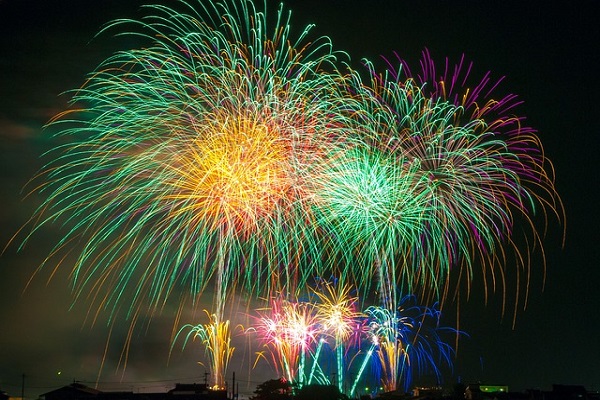Japanese New Year Traditions are Rooted in Buddhism and Shinto
- By Kelly Frazier --
- 31 Dec 2015 --

Examining Japanese New Year traditions.
New Year in Japan is an auspicious holiday. It symbolizes renewal. The event starts with “Bonenkai” or “forget the year” parties in December which permit everyone to prepare themselves for a fresh start. Celebrations continue until January 3 and unlike western ones, they are solemn and quiet family affairs. Even busy people get time off from work, for the “nenmatsu nenshi” which literally means end of year and start of year.
Japanese New Year Traditions are Rooted in Buddhism and Shinto[/tweetthis]
Purification bells are rung in the Buddhist temples 108 times. These bells or Joya no Kane are rung that number of times as 108 represents number of weaknesses in humans. Offices and homes are meticulously cleaned by scrubbing (osoji) and prepared for New Year. Small amounts of money are gifted to children. This practice is termed otoshidama.
Another popular practice is to invite good luck to your home with auspicious decorations. The Japanese buy “shimekezari” and “kadomatsu” and decorate the home and business with them. Kadomatsu is a kind of ornament placed at the home or office entrance. It is made of three bamboo shoots of different lengths, pine and plum branches. The bamboo shoots symbolize prosperity, the pine and plum branches symbolize longevity and steadfastness respectively. Popular lore says that gods dwell in these places and they visit to bless humans. The kadomatsu are burned post January 15. The shimekazari are found to be hanging above doors. They welcome and invite gods bearing good fortune. They also repel evil spirits. These are made of “shimenawa” or sacred straw rope, bitter orange and pine among others.
The Japanese also offer “kagami mochi” to their gods. These are two rice cakes round in shape and stacked on top of other. An orange is placed on its apex. The whole arrangement is put on the Shinto altar. There are also other items to make the New Year a lucky one- “hagoita” and “hamaya.” The former is used to repel bad luck and the latter to destroy evil spirits.
Japanese bell ringing to say goodbye to 2015 – I am ready for a new year @ Asian Art Museum https://t.co/kAwIJbZfHt
— kerry oconnor (@designerKerry) December 31, 2015
Food culture in Japan also sees special dishes during this season. Osechi-ryori is a special delicacy served on New Year's Day. It can last for seven days sans refrigeration. The significance of osechi-ryori is to appease Kohji, the fire god, by not lighting any cooking fires. The elaborate meal is presented within bento boxes. Families gather around to eat traditional osechi foods. The osechi is a lucky food which brings happiness to families.


















